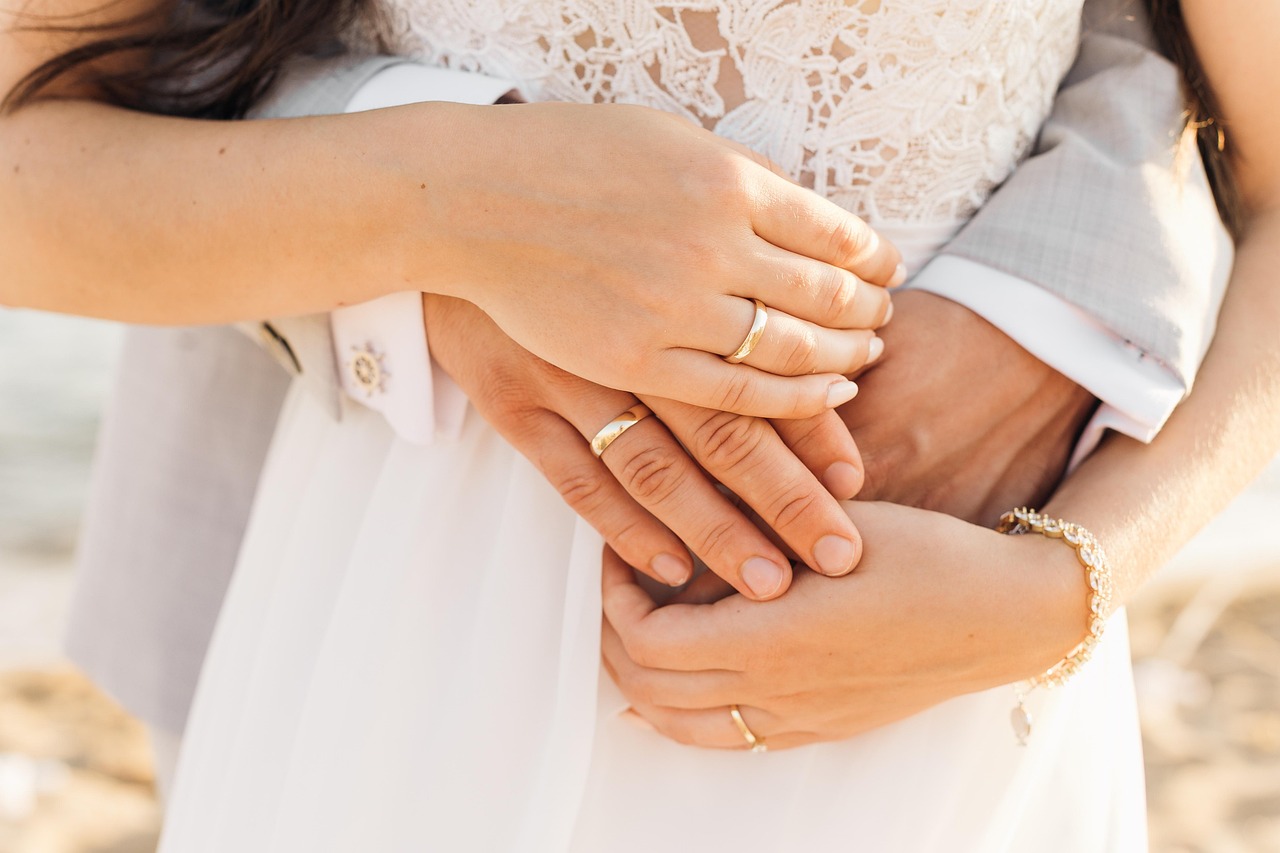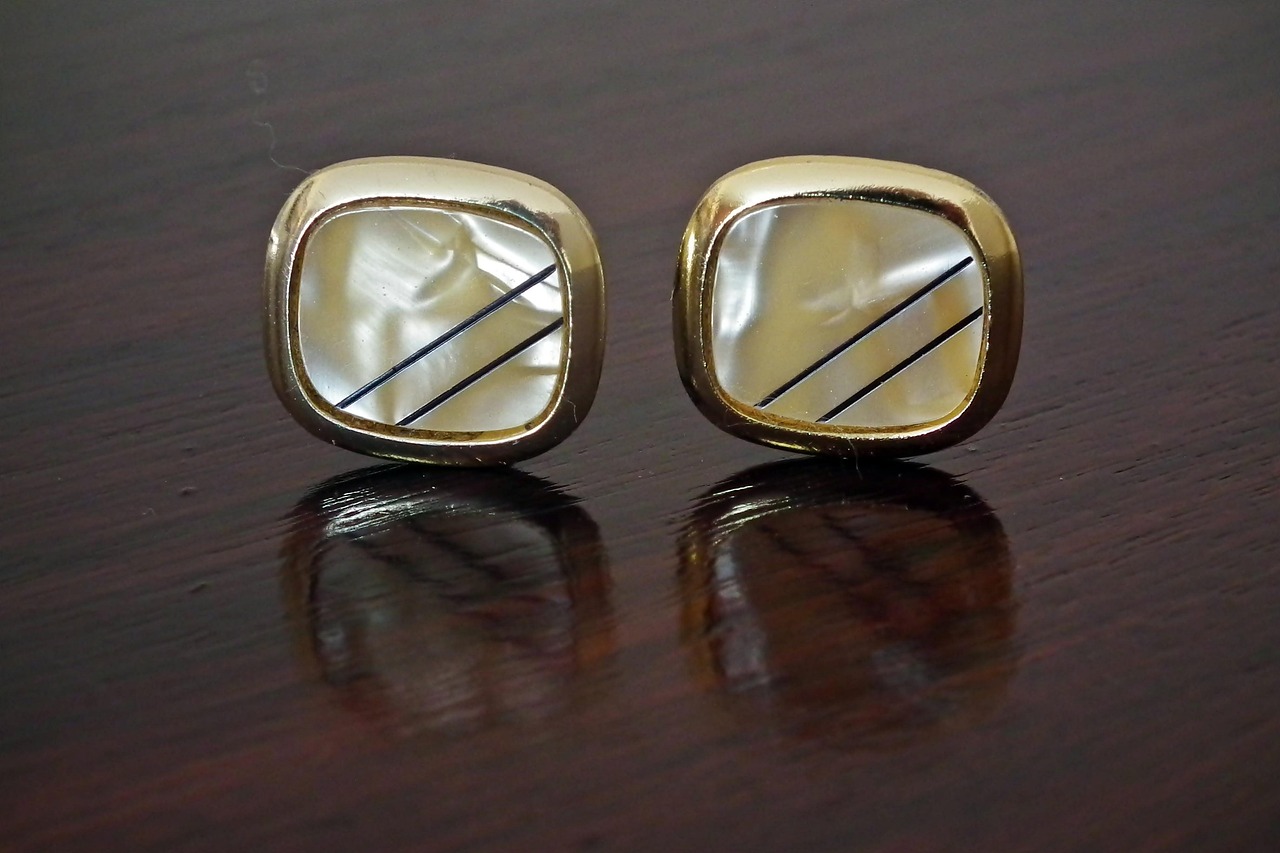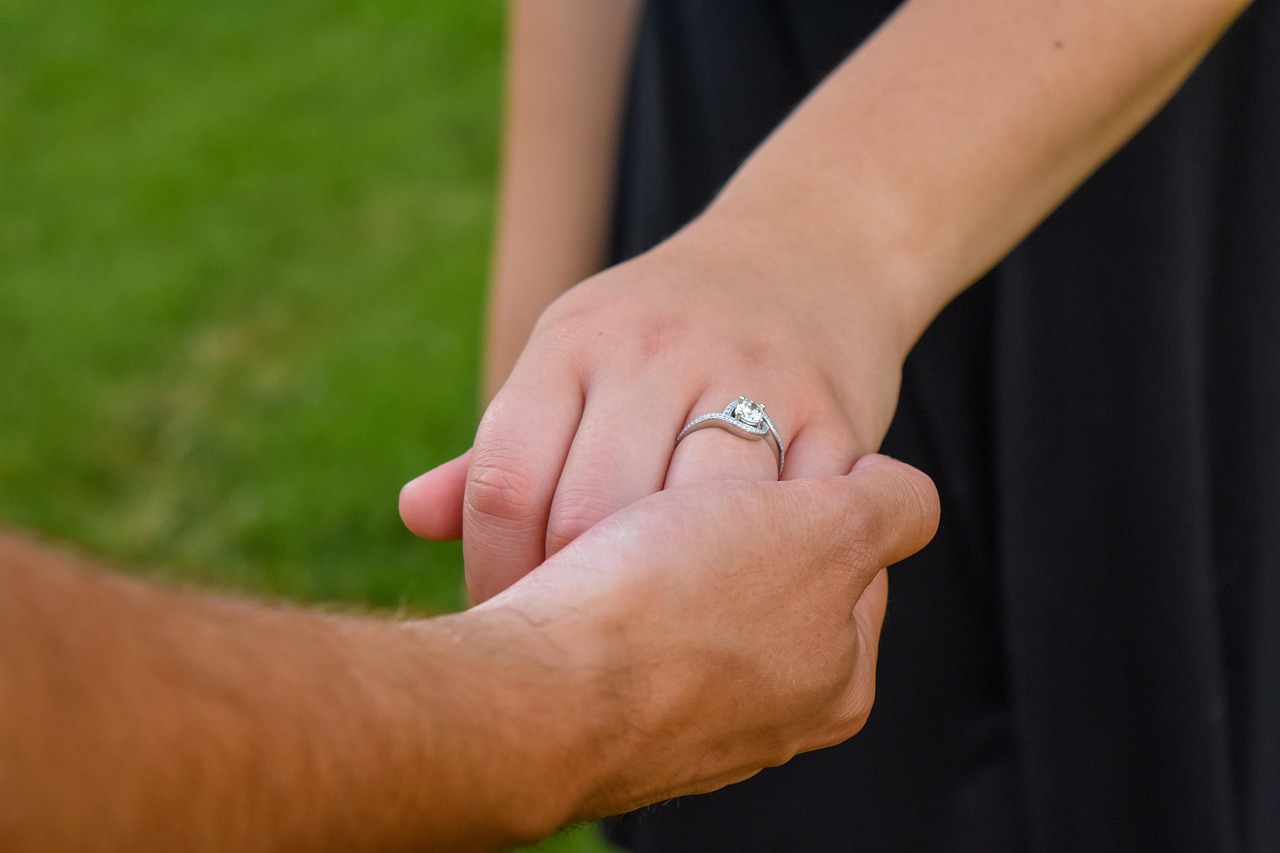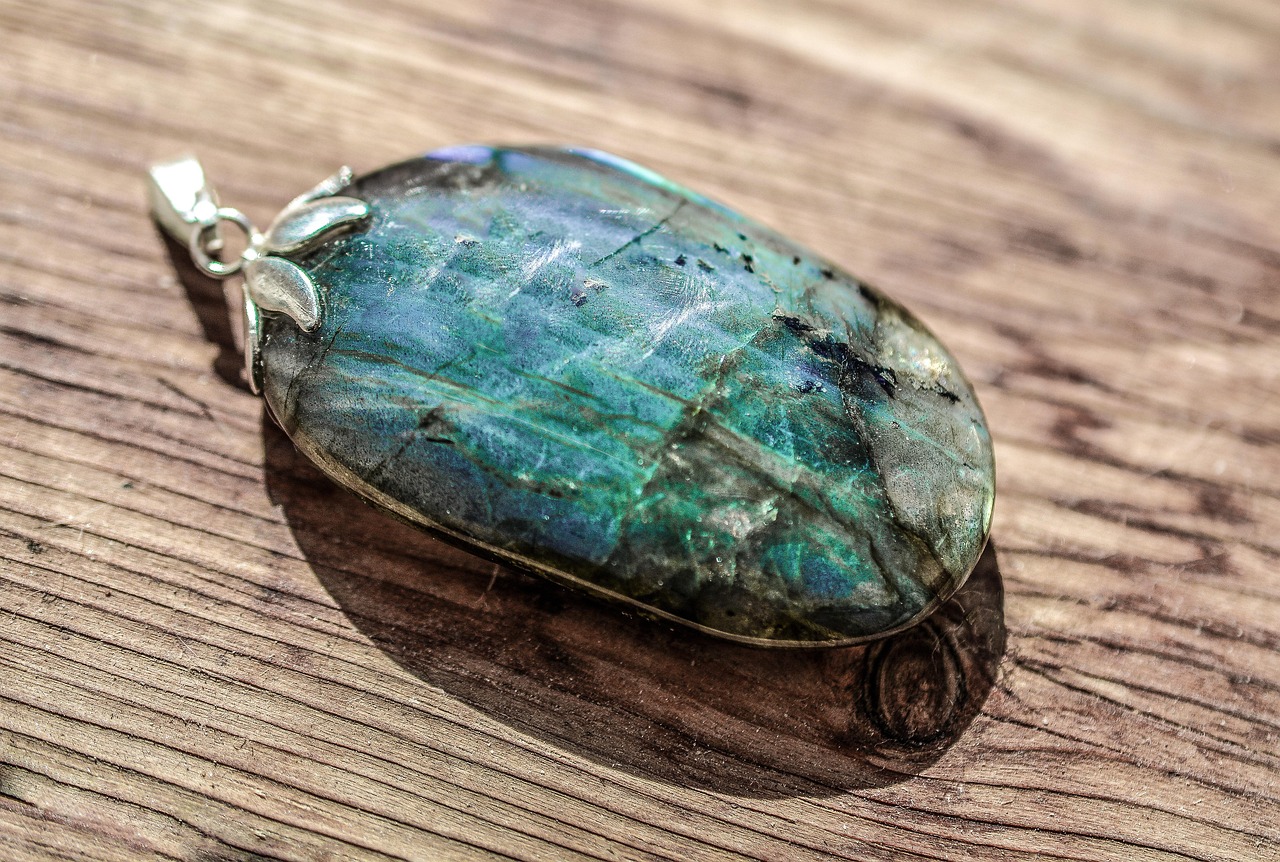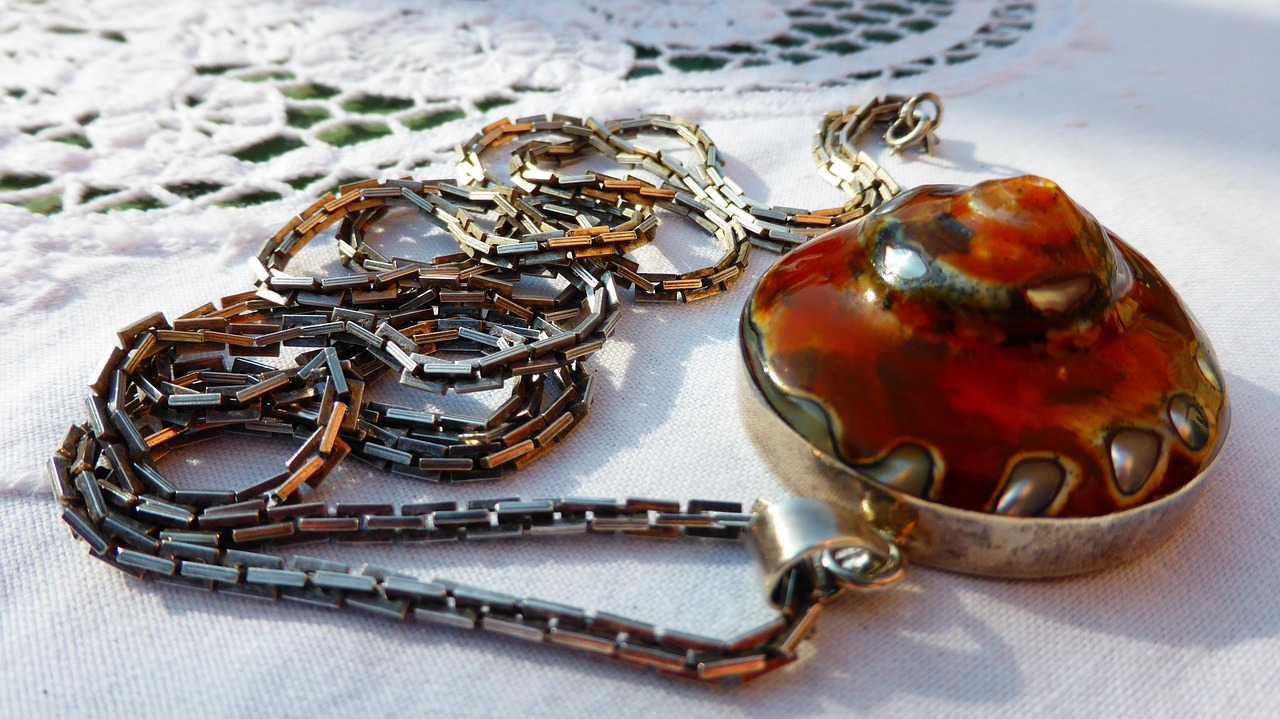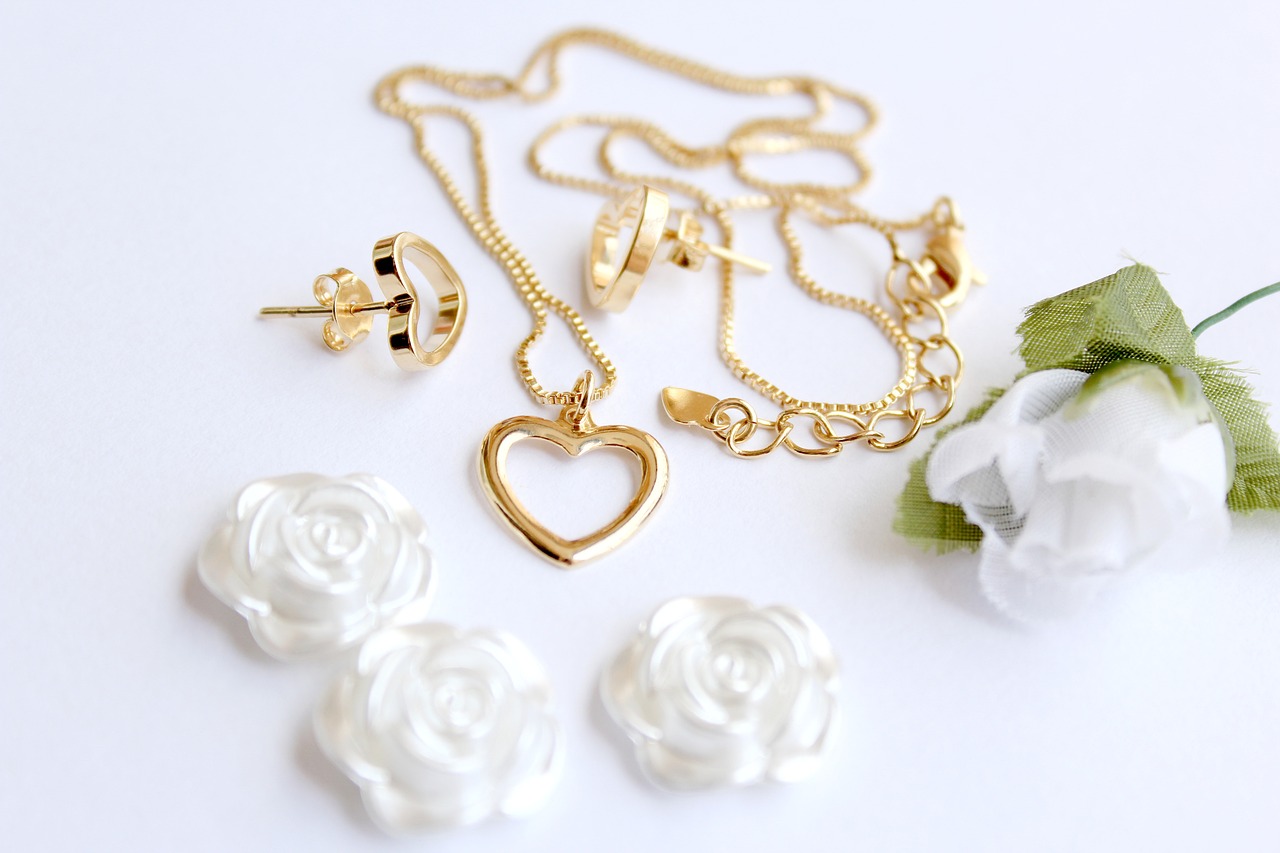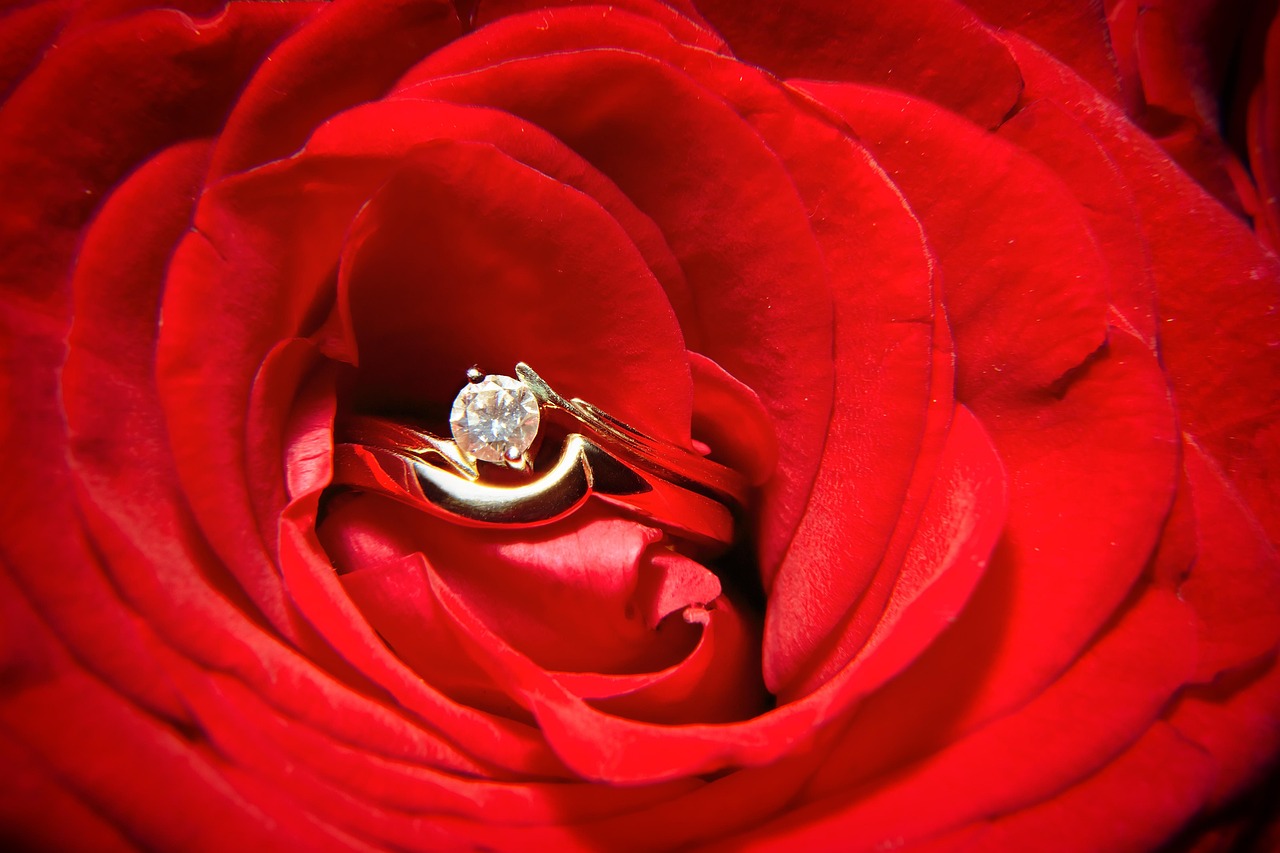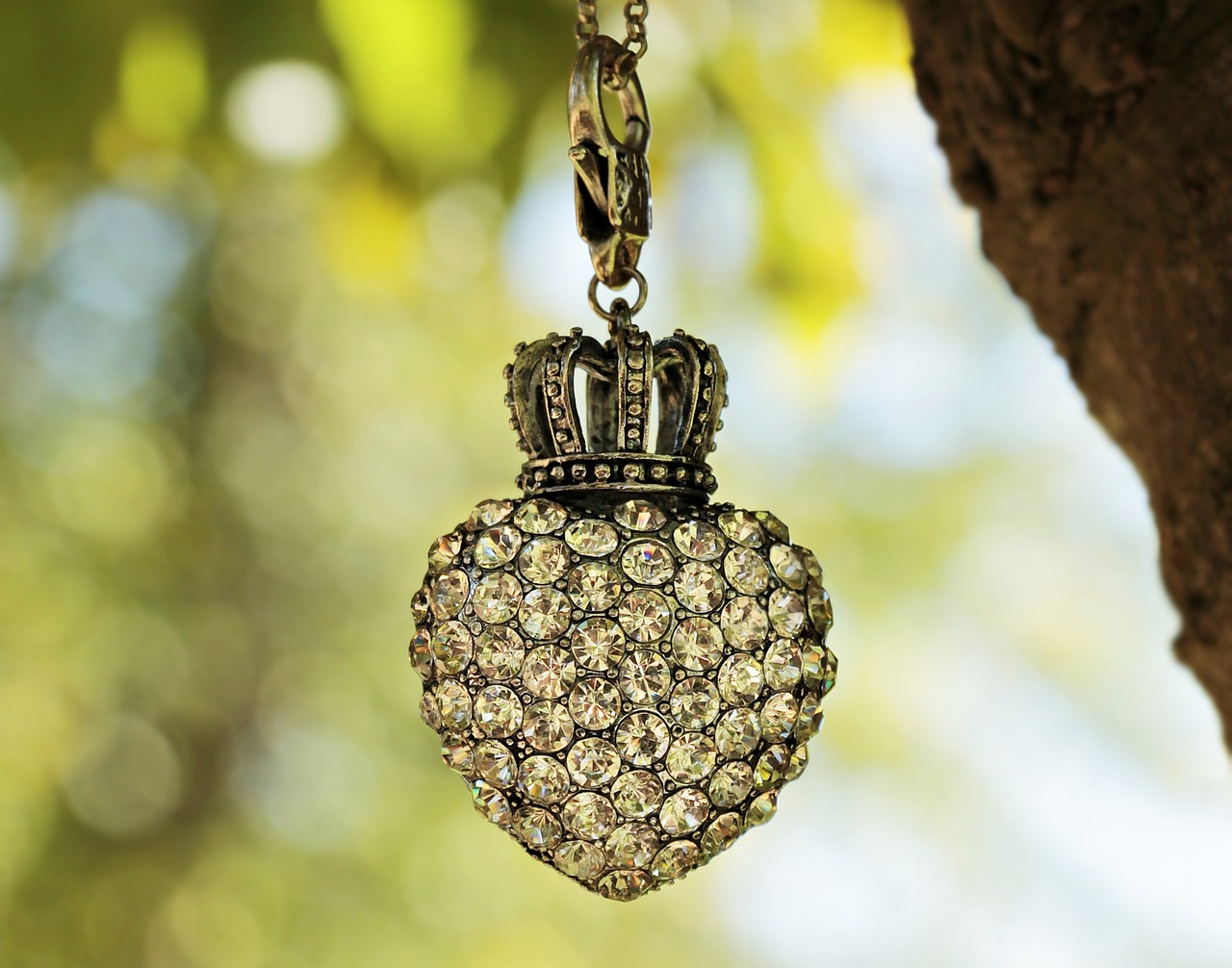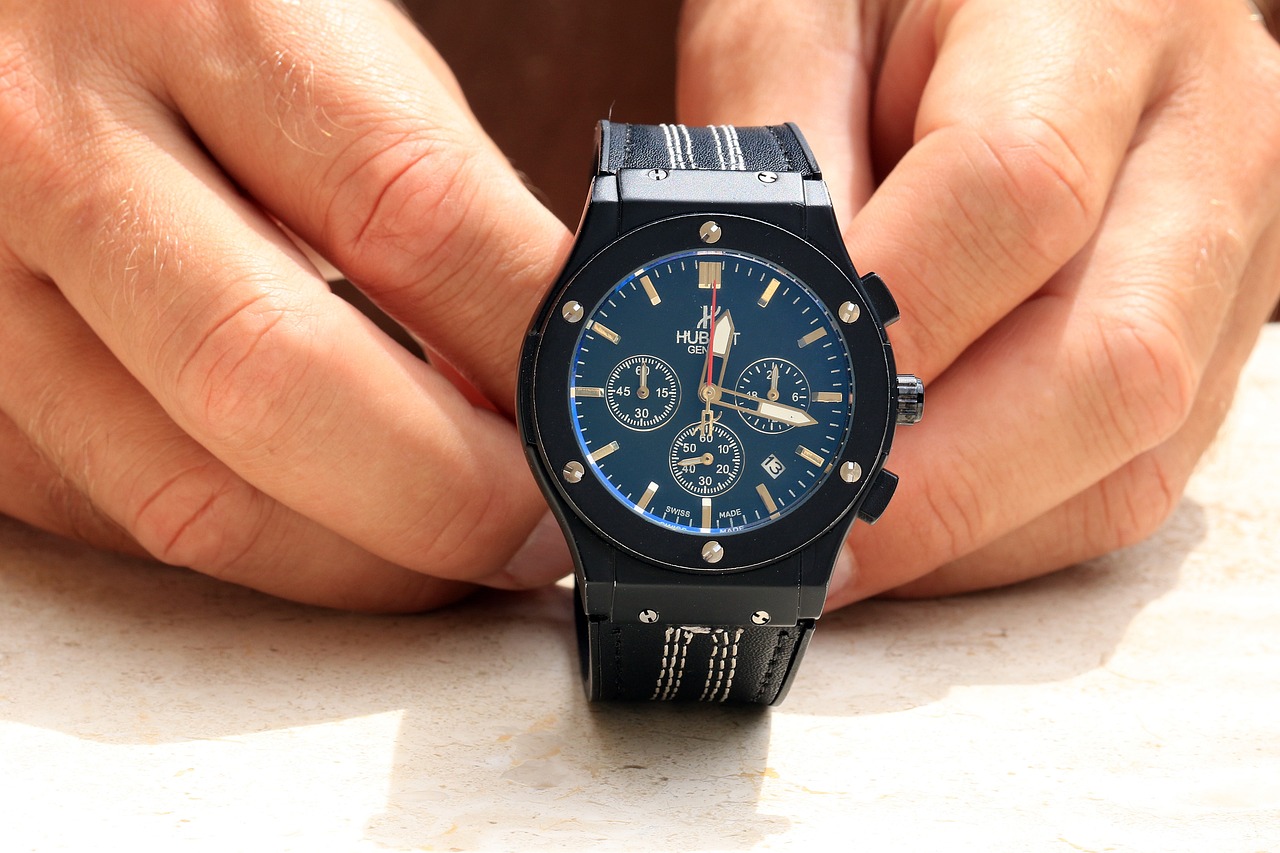Investing in pre-owned designer jewelry has become increasingly popular among savvy buyers and collectors. This article delves into the myriad benefits and considerations involved in this investment avenue, offering insights into current market trends, valuation methods, and practical tips for making informed purchases.
Purchasing pre-owned designer jewelry provides numerous advantages that appeal to both collectors and casual buyers. Some of the most notable benefits include:
- Cost Savings: Pre-owned pieces often come at a fraction of the original retail price, allowing buyers to acquire luxury items without breaking the bank.
- Unique Finds: The second-hand market is rich with unique and discontinued items that can add character to any collection.
- Sustainability: Buying pre-owned promotes sustainability by reducing the demand for new production, making it an environmentally friendly choice.
Evaluating the value of pre-owned jewelry is essential for making a smart investment. Key factors to consider include:
- Brand Reputation: High-end brands like Cartier and Tiffany & Co. often retain their value better than lesser-known brands.
- Condition: The state of the jewelry significantly impacts its value. Well-maintained pieces can command higher prices.
- Market Demand: Understanding current trends and demand for specific styles or brands can guide your purchasing decisions.
Several aspects can affect the valuation of pre-owned jewelry:
- Materials Used: The quality of materials, such as gold, diamonds, and other gemstones, plays a crucial role in determining value.
- Craftsmanship: Pieces that exhibit superior craftsmanship often hold higher value due to their artistry and skill involved in creation.
- Historical Significance: Jewelry with a notable history or provenance can greatly increase its desirability and value.
To protect your investment, it’s vital to verify the authenticity of pre-owned jewelry. Here are some tips:
- Research Reputable Sellers: Always buy from established and trustworthy sources.
- Certificates of Authenticity: Look for documentation that verifies the piece’s authenticity.
- Expert Appraisal: Consider having the jewelry appraised by a professional to ensure its legitimacy.
While there are many advantages, buying pre-owned jewelry carries certain risks:
- Counterfeit Items: The market is unfortunately rife with counterfeit pieces, making it essential to do thorough research.
- Fluctuating Market Values: The value of jewelry can change based on market trends, so it’s important to stay informed.
Choosing the right platforms for purchasing pre-owned designer jewelry can significantly impact your investment:
- Online Marketplaces: Websites like eBay and The RealReal offer extensive selections but require careful evaluation of seller ratings and reviews.
- Auctions and Estate Sales: These venues can provide unique opportunities to acquire valuable pieces at competitive prices.
Proper maintenance of pre-owned jewelry is crucial to preserving its value and appearance:
- Safe Cleaning Techniques: Use gentle cleaning methods to avoid damaging delicate materials.
- Proper Storage: Store jewelry in a clean, dry place to prevent scratches and tarnishing.
By understanding the benefits, risks, and best practices associated with buying pre-owned designer jewelry, you can make informed decisions that enhance your collection and investment portfolio.
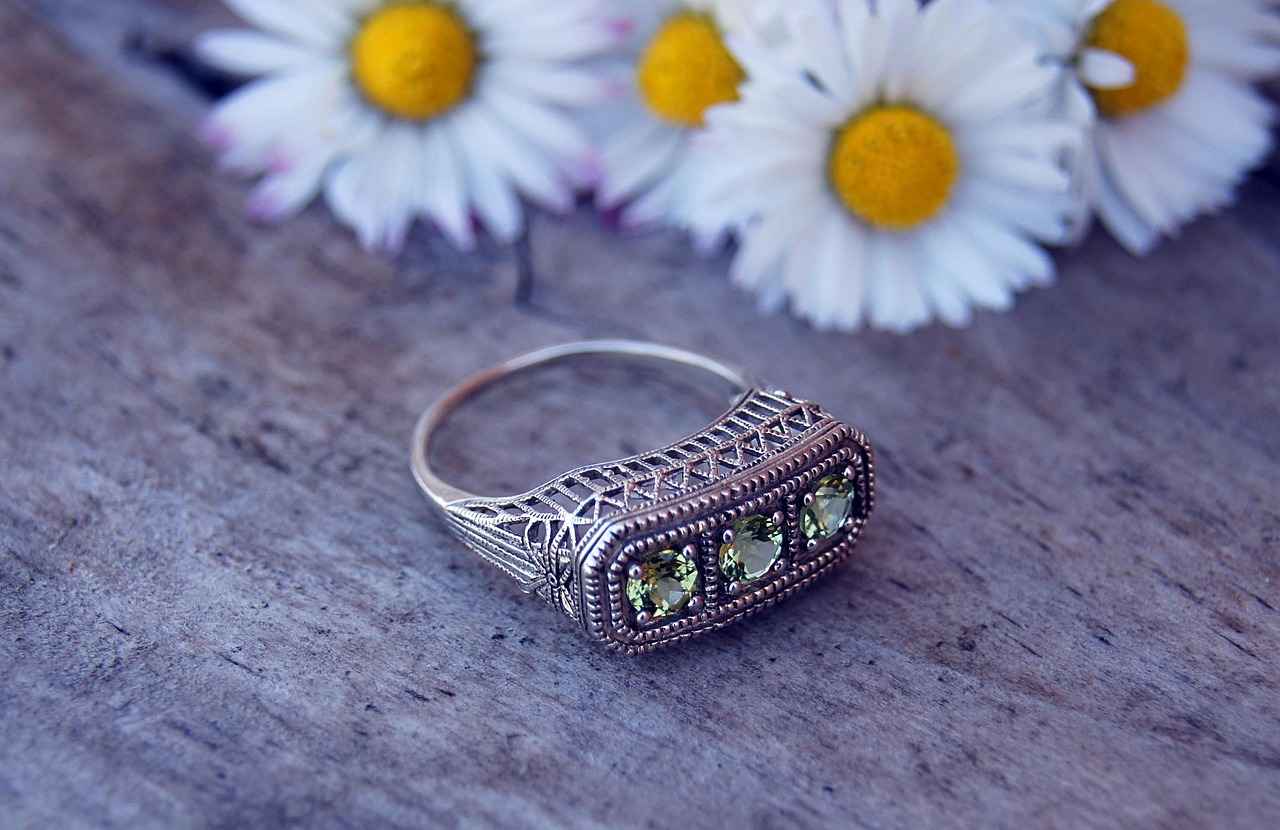
What Are the Benefits of Buying Pre-Owned Designer Jewelry?
When it comes to acquiring exquisite pieces of jewelry, pre-owned designer jewelry stands out as a smart choice for many buyers. This market offers a unique blend of affordability, individuality, and environmental consciousness. In this section, we will delve into the benefits of buying pre-owned designer jewelry and how understanding these advantages can empower consumers to make informed decisions.
- Cost Savings: One of the most significant advantages of purchasing pre-owned designer jewelry is the cost savings. New designer pieces can come with hefty price tags, often marked up due to brand prestige. In contrast, pre-owned items typically sell for a fraction of their original price, allowing buyers to acquire luxury without breaking the bank.
- Unique Finds: The world of pre-owned jewelry is filled with unique and distinctive pieces that may no longer be available in retail stores. This uniqueness allows buyers to express their personal style and stand out from the crowd. Whether it’s a vintage piece or a limited edition, pre-owned jewelry can offer something special that new collections may not.
- Sustainability: In today’s environmentally conscious world, purchasing pre-owned items is a sustainable choice. By opting for pre-owned designer jewelry, consumers are effectively reducing waste and minimizing the demand for new production, which often involves resource-intensive processes. This choice not only benefits the buyer but also contributes positively to the environment.
- Investment Potential: Some pre-owned designer jewelry can appreciate in value over time, especially pieces from renowned brands. Understanding the investment potential of certain items can lead to smart purchases that may yield financial returns in the future. Buyers who are knowledgeable about market trends can make informed choices that benefit them long-term.
- Quality Craftsmanship: Many designer pieces are crafted with the utmost attention to detail and quality. When purchasing pre-owned jewelry, buyers often benefit from high-quality materials and craftsmanship that stand the test of time. This means that even a pre-owned piece can retain its beauty and structural integrity for years to come.
In summary, the benefits of buying pre-owned designer jewelry extend beyond mere cost savings. They encompass a range of factors that include unique style opportunities, sustainability, investment potential, and enduring quality. By understanding these advantages, buyers can navigate the pre-owned jewelry market with confidence and make choices that align with their values and aesthetic preferences.

How to Assess the Value of Pre-Owned Jewelry?
When investing in pre-owned jewelry, understanding its value is paramount. The process of assessing this value involves several critical factors that can significantly influence your investment decision. This article will delve into the essential components of jewelry valuation, providing you with the insights needed to make informed choices.
Evaluating the value of pre-owned jewelry encompasses multiple elements that can affect its overall worth. These include:
- Brand Reputation: The brand behind the jewelry piece often dictates its value. Established luxury brands typically have a higher resale value due to their reputation and demand in the market.
- Condition: The physical state of the jewelry is crucial. Well-maintained pieces that show minimal signs of wear are usually more valuable than those that are damaged or require repairs.
- Market Demand: Understanding current market trends is vital. Some styles or brands may be trending, increasing their desirability and value.
- Materials Used: The quality and type of materials, such as gold, silver, or gemstones, play a significant role in valuation. Precious metals and high-quality stones typically boost a piece’s worth.
- Craftsmanship: The level of artistry involved in creating the jewelry can also affect its value. Intricate designs and superior craftsmanship often command higher prices.
- Historical Significance: Some pieces may have historical or sentimental value, which can enhance their appeal and marketability.
The brand reputation of a jewelry piece significantly impacts its resale value. High-end brands, such as Cartier or Tiffany & Co., tend to retain their value better than lesser-known ones. This is due to their established market presence and the trust they have built with consumers over time. When considering a purchase, it is essential to research the brand and its standing in the market.
The condition of pre-owned jewelry plays a vital role in its overall value. A piece that has been well cared for, with minimal scratches or damage, will command a higher price than one that shows signs of wear and tear. Buyers should carefully inspect pieces for any imperfections or necessary repairs, as these factors can significantly affect investment potential.
Verifying the authenticity of pre-owned jewelry is crucial to avoid counterfeit pieces. Buyers should look for certificates of authenticity, which are often provided by reputable sellers. Additionally, researching the jewelry’s provenance can help ensure its legitimacy. Engaging with knowledgeable appraisers or gemologists can also provide peace of mind regarding authenticity.
Staying informed about market trends can help buyers identify valuable pieces and understand the timing of their investments. Trends can shift based on fashion, celebrity endorsements, and economic factors. Following jewelry blogs, attending trade shows, and participating in online forums can enhance your knowledge and assist in making smarter purchasing decisions.
Finding the right platforms to purchase pre-owned designer jewelry can significantly impact your investment. Reputable online marketplaces, auction houses, and estate sales can offer unique opportunities to acquire valuable pieces. Always research customer reviews and seller ratings to ensure a positive buying experience.
Proper care and maintenance of pre-owned jewelry can preserve its value and appearance. Learning effective care techniques is essential for long-term investment success. Regular cleaning, safe storage, and avoiding exposure to harsh chemicals can help maintain the integrity of your pieces.
What Factors Influence Jewelry Valuation?
When considering the purchase of pre-owned designer jewelry, it’s essential to understand the various factors that impact its valuation. This knowledge not only aids in making informed decisions but also enhances your overall purchasing strategy. Below, we delve into the critical aspects that influence jewelry valuation.
The materials used in jewelry significantly affect its value. Precious metals like gold, platinum, and silver are highly sought after due to their rarity and durability. Furthermore, the quality of gemstones—such as diamonds, rubies, and sapphires—plays a crucial role in valuation. Factors like carat weight, cut, clarity, and color determine the desirability and price of these stones. Understanding these materials can help buyers appreciate the worth of a piece.
Craftsmanship is another pivotal element in jewelry valuation. Pieces that exhibit exceptional artistry and attention to detail often command higher prices. Handmade items or those from renowned designers typically showcase superior craftsmanship, making them more desirable. Buyers should look for signs of quality, such as intricate settings and smooth finishes, as these can indicate the level of skill involved in creating the piece.
The historical significance of a jewelry piece can greatly enhance its value. Items with a rich history, such as those belonging to famous personalities or significant events, often attract collectors. Provenance—the history of ownership—can add to the allure and price of the jewelry. Buyers should consider researching the background of a piece to understand its historical context and potential value appreciation.
The brand reputation of a jewelry piece is crucial in determining its value. High-end brands like Cartier, Tiffany & Co., and Bulgari are known for their quality and exclusivity, often leading to better resale values. Buyers should be aware of the brands that hold their value well and consider investing in those to maximize their investment potential.
The condition of pre-owned jewelry is vital in assessing its value. Well-maintained pieces that show minimal signs of wear are more likely to command higher prices. Conversely, items that are damaged or require repairs may diminish in value. Buyers should carefully inspect the condition of a piece before making a purchase, as this can significantly impact its investment potential.
Finally, the authenticity of jewelry is paramount in determining its value. Counterfeit items can mislead buyers and lead to financial loss. Seeking documentation, such as certificates of authenticity, and purchasing from reputable sellers can help ensure that you are investing in genuine pieces. Understanding how to verify authenticity is crucial for protecting your investment.
In conclusion, various factors influence the valuation of jewelry, including materials, craftsmanship, historical significance, market demand, brand reputation, condition, and authenticity. By familiarizing yourself with these elements, you can enhance your purchasing strategy and make informed decisions when investing in pre-owned designer jewelry.
How Does Brand Reputation Affect Value?
When it comes to investing in jewelry, brand reputation plays a pivotal role in determining the value of a piece. The luxury jewelry market is often influenced by various factors, but the brand name can significantly sway both initial purchasing decisions and future resale potential. Understanding why brand reputation matters can empower buyers to make informed choices.
The brand of a jewelry piece significantly impacts its resale value. High-end brands like Tiffany & Co. and Cartier tend to retain their value better than lesser-known ones. This is primarily due to a combination of factors, including quality, craftsmanship, and market demand. Buyers often perceive these brands as symbols of status and luxury, which contributes to their higher resale prices.
- Quality Materials: High-end brands use superior materials, such as precious metals and gemstones, which are more durable and desirable.
- Craftsmanship: Renowned brands often employ skilled artisans, ensuring that each piece is crafted to perfection. This meticulous attention to detail enhances the overall value.
- Limited Editions: Many high-end brands release limited edition pieces, creating a sense of exclusivity that can drive up demand and value over time.
Brand awareness is essential for buyers looking to make a smart investment. A well-known brand not only assures quality but also provides a level of trust and credibility in the marketplace. Buyers are more likely to pay a premium for pieces from brands they recognize and respect. This awareness can also lead to better resale opportunities, as potential buyers often seek out familiar names when purchasing pre-owned jewelry.
To assess the reputation of a brand, consider the following steps:
- Online Reviews: Check customer reviews and ratings on reputable websites to gauge overall satisfaction.
- Expert Opinions: Consult jewelry experts or appraisers who can provide insights into a brand’s standing in the market.
- Social Media Presence: Analyze a brand’s engagement on social media platforms, as a strong online presence often indicates a reputable brand.
While high-end brands typically offer better resale value, lesser-known brands can still be valuable investments. They may offer unique designs, lower price points, and emerging market potential. However, buyers should be cautious and conduct thorough research to ensure they are investing in quality pieces that have the potential to retain value.
As a buyer, it’s crucial to consider the brand reputation alongside other factors such as condition, authenticity, and current market trends. By being well-informed, you can navigate the jewelry market more effectively and make purchases that align with your investment goals.
In summary, the brand of a jewelry piece is a significant determinant of its resale value. High-end brands not only retain value better but also provide buyers with a sense of security and trust. Whether you are looking to invest in a luxury piece or exploring lesser-known options, understanding brand reputation will help you make smarter purchasing decisions.
Why is Condition Important in Valuation?
When it comes to investing in pre-owned designer jewelry, one of the most critical factors to consider is the condition of the pieces. The condition not only affects the aesthetic appeal of the jewelry but also significantly influences its market value. Understanding the nuances of how condition impacts valuation is essential for anyone looking to make a wise investment.
The condition of pre-owned jewelry plays a vital role in its overall value. Well-maintained pieces often command higher prices due to their desirability and lower likelihood of requiring repairs. Conversely, items that show signs of wear or damage may necessitate costly repairs, which can diminish their investment potential. This can lead to buyers being hesitant, as they may perceive these items as less valuable or more of a risk.
- Mint Condition: Items that are virtually flawless and show no signs of wear. These pieces are highly sought after and typically fetch the highest prices.
- Excellent Condition: Jewelry that has been well cared for, showing minimal signs of use. These pieces are still very appealing to buyers.
- Good Condition: Pieces that show some wear but are still structurally sound. They may need minor repairs or cleaning.
- Fair Condition: Jewelry that has noticeable damage, such as scratches or missing stones. These items may require significant repairs, affecting their value.
- Poor Condition: Items that are heavily damaged or broken. These pieces often have little to no resale value unless restored.
Investing in well-maintained pre-owned jewelry can yield numerous benefits. Not only do these pieces tend to retain their value better, but they also offer buyers peace of mind knowing that they are acquiring quality items. Moreover, well-preserved jewelry can often be worn immediately without the need for repairs, making them more appealing to potential buyers.
Assessing the condition of pre-owned jewelry requires a keen eye and sometimes the assistance of a professional. Here are some tips:
- Visual Inspection: Look for scratches, dents, or discoloration. Pay close attention to clasps and settings, as these areas can be prone to wear.
- Check for Missing Stones: Ensure that all stones are intact and securely set. Missing stones can significantly lower the value of a piece.
- Seek Expert Opinion: If in doubt, consider having the jewelry appraised by a certified gemologist or jeweler. They can provide insights into the condition and potential repair costs.
While some repairs can enhance the value of a piece, others may detract from it. For instance, restoration work that is done poorly can result in a loss of authenticity, which can lower the item’s value. On the other hand, professional repairs that maintain the original integrity of the piece can make it more appealing to buyers.
In conclusion, understanding the condition of pre-owned jewelry is crucial for anyone looking to invest wisely. By taking the time to assess the condition and seeking professional advice when necessary, buyers can make informed decisions that enhance their investment potential.
How Can You Verify Authenticity?
When it comes to investing in pre-owned jewelry, verifying authenticity is of utmost importance. With the rise of counterfeit pieces in the market, understanding how to authenticate jewelry can not only protect your investment but also ensure that you receive genuine products that hold their value. This article delves into effective methods for verifying authenticity, helping you make informed purchasing decisions.
Purchasing pre-owned jewelry without proper verification can lead to significant financial loss. Counterfeit items may look visually appealing, but they lack the quality and value of genuine pieces. By ensuring authenticity, buyers can avoid scams and invest in items that appreciate over time.
- Research the Seller: Before making a purchase, it’s crucial to conduct thorough research on the seller. Look for established retailers with positive reviews. Trustworthy sellers often provide detailed information about the jewelry’s history and authenticity.
- Examine Hallmarks and Stamps: Genuine jewelry typically features specific hallmarks or stamps indicating the brand, metal type, and country of origin. Familiarizing yourself with these marks can help you identify authentic pieces.
- Request Documentation: Ask for certificates of authenticity or appraisals from reputable gemologists. These documents provide proof of the jewelry’s legitimacy and can enhance its resale value.
- Consult an Expert: If you are unsure about the authenticity of a piece, consider consulting a professional jeweler or appraiser. Their expertise can provide valuable insights and confirm whether the item is genuine.
Recognizing counterfeit jewelry requires a keen eye and knowledge of specific indicators. Here are some tips to help you identify fakes:
- Check for Quality: Authentic jewelry is crafted with high-quality materials and exceptional craftsmanship. Inspect for any signs of poor workmanship, such as uneven settings or rough edges.
- Assess the Weight: Genuine pieces often have a certain weight due to the materials used. If a piece feels unusually light, it may be a counterfeit.
- Look for Inconsistencies: Compare the jewelry with official images from the brand’s website. Look for discrepancies in design, color, or materials.
Several tools can aid in the authentication process:
- Jewelry Loupe: A magnifying glass or loupe can help you examine hallmarks and craftsmanship closely.
- Gem Tester: This device can help identify the type of stone used in the jewelry, confirming its authenticity.
- Scale: Weighing the piece can help determine if it aligns with the expected weight for that type of jewelry.
Yes, numerous online resources provide valuable information on how to authenticate jewelry. Websites like the Gemological Institute of America (GIA) offer guidelines on identifying genuine pieces and understanding hallmark meanings. Additionally, forums and communities dedicated to jewelry collecting can be excellent places to seek advice from experienced collectors and professionals.
In conclusion, verifying the authenticity of pre-owned jewelry is essential for protecting your investment. By employing various methods, utilizing tools, and seeking expert advice, you can confidently navigate the world of pre-owned jewelry and ensure that your purchases are genuine and valuable.
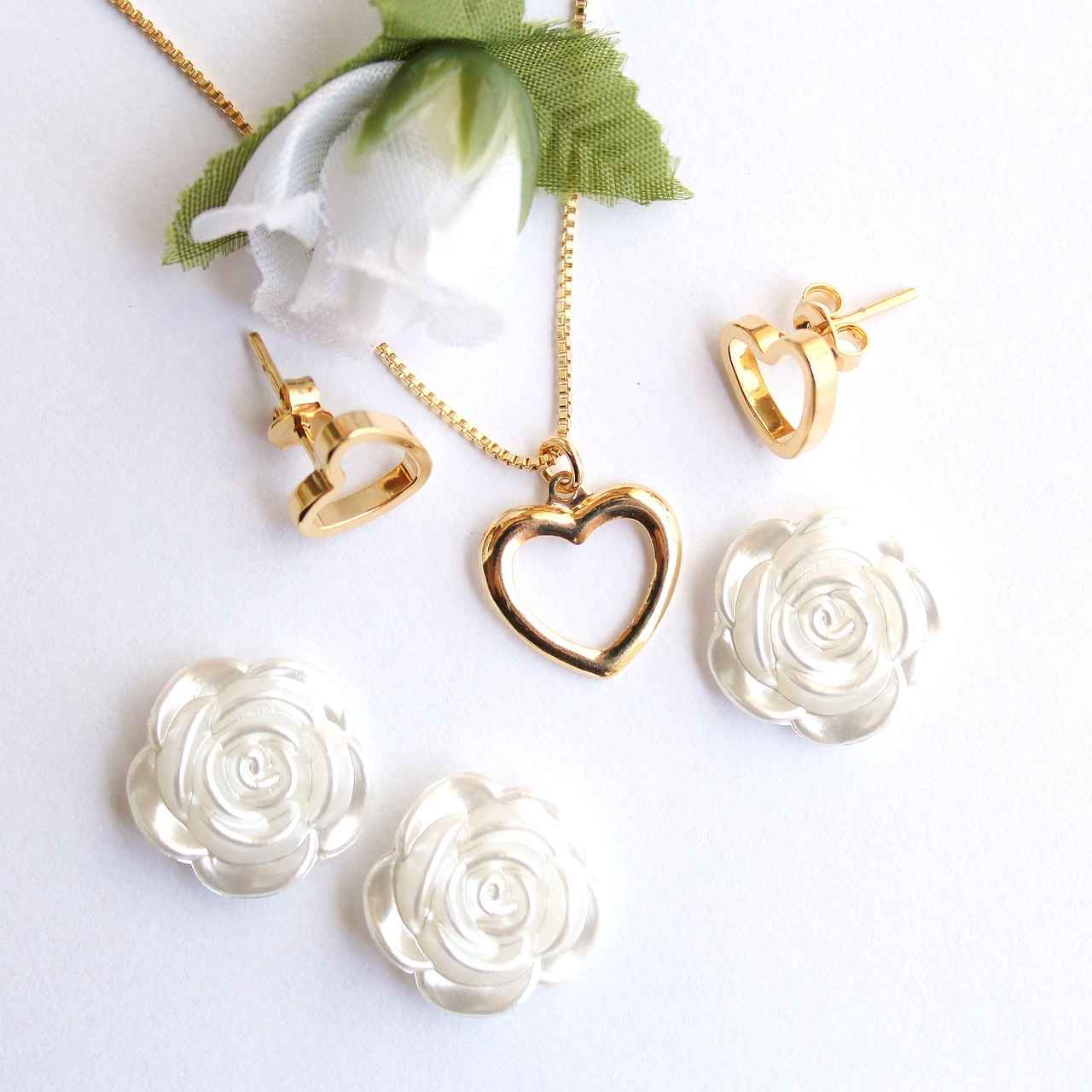
What Are the Risks of Buying Pre-Owned Jewelry?
When considering the purchase of pre-owned jewelry, it’s crucial to be aware of the potential risks involved. While the allure of acquiring unique pieces at a fraction of their original price is enticing, buyers must navigate a landscape filled with potential pitfalls. Understanding these risks can empower consumers to make informed decisions.
One of the primary risks associated with buying pre-owned jewelry is the possibility of encountering counterfeit items. The jewelry market is unfortunately not immune to fraud, and counterfeit pieces can often be difficult to distinguish from genuine items. Buyers might unknowingly invest in a fake, leading to significant financial loss. Therefore, it is essential to conduct thorough research and seek reputable sellers.
Another risk to consider is the fluctuating market values of jewelry. The value of pre-owned pieces can vary dramatically based on trends, brand reputation, and overall demand. What may seem like a good investment today could depreciate in value tomorrow. Keeping abreast of market trends and understanding the factors that influence valuation is crucial for making sound investment choices.
To protect yourself from counterfeit jewelry, it is advisable to:
- Research Reputable Sellers: Always buy from established retailers or auction houses known for their authenticity.
- Request Certificates of Authenticity: Legitimate pieces often come with documentation verifying their authenticity.
- Educate Yourself: Familiarize yourself with the characteristics of genuine pieces from the brands you are interested in.
Being aware of market trends is essential for any jewelry buyer. Some trends to watch include:
- Popular Styles: Certain styles may gain or lose popularity, affecting their resale value.
- Brand Reputation: High-end brands tend to retain value better than lesser-known brands.
- Material Demand: Changes in the demand for precious metals and gemstones can influence prices.
Staying informed about these trends can help you make better purchasing decisions and potentially increase your investment’s value over time.
Besides counterfeits and market fluctuations, buyers should also consider the condition of the jewelry. Pre-owned pieces may have wear and tear, which can affect their value and desirability. It’s important to assess the condition carefully and factor in any potential repair costs when determining if a piece is a good investment.
Additionally, emotional attachment can sometimes cloud judgment. Buyers may fall in love with a piece and overlook its flaws or potential issues. It’s advisable to approach the purchase with a balanced mindset, weighing both the emotional and financial aspects before making a commitment.
In summary, while buying pre-owned jewelry can be a rewarding experience, it is not without its challenges. By being informed about the potential risks, including counterfeit items, fluctuating market values, and the importance of condition, buyers can navigate the jewelry market more effectively. With the right knowledge and precautions, investing in pre-owned jewelry can be a fulfilling and wise decision.
How to Avoid Counterfeit Jewelry?
When it comes to purchasing jewelry, especially pre-owned designer pieces, one of the most pressing concerns for buyers is the risk of encountering counterfeit items. With the rise in popularity of luxury and designer jewelry, the market has unfortunately seen an increase in fraudulent practices. To ensure that your investment is secure and that you are purchasing authentic pieces, it is imperative to take proactive steps. Below are some essential strategies to help you avoid counterfeit jewelry.
Before making a purchase, take the time to research sellers thoroughly. Look for established retailers or platforms with a solid reputation in the jewelry market. Check for customer reviews and ratings, and pay attention to any red flags, such as negative feedback regarding authenticity. Reputable sellers often have a history of satisfied customers and transparent business practices, which can give you peace of mind.
Certificates of authenticity are crucial documents that verify the legitimacy of a jewelry piece. These certificates are typically issued by the manufacturer or a recognized third-party appraiser. When purchasing pre-owned jewelry, always ask the seller if the item comes with such a certificate. A genuine certificate can significantly reduce the risk of buying counterfeit products, as it provides details about the materials, craftsmanship, and origin of the piece.
Before finalizing your purchase, conduct a thorough examination of the jewelry. Look for hallmarks or stamps that indicate the brand and authenticity. High-quality pieces often have specific markings that can help identify them. Additionally, inspect the overall craftsmanship; authentic designer jewelry typically displays superior quality in terms of materials and design. If something seems off, trust your instincts and consider walking away from the purchase.
If you are uncertain about a piece’s authenticity, consider consulting with a jewelry expert or appraiser. These professionals can provide valuable insights and help you assess whether the jewelry is genuine. Many appraisers offer services for a fee, but their expertise can save you from making a costly mistake.
Understanding the current market trends can also help you avoid counterfeit jewelry. Familiarize yourself with the prices of authentic pieces, as this knowledge can alert you to deals that seem too good to be true. If a seller is offering a luxury item at a significantly reduced price, it could be a warning sign of a counterfeit product.
Finally, always trust your instincts. If something feels off about the seller or the piece, it is better to err on the side of caution. Authenticity is crucial when it comes to jewelry investments, and the peace of mind that comes from knowing your purchase is genuine is invaluable. Take your time, do your research, and don’t rush into a purchase.
By following these guidelines, you can significantly reduce the risk of purchasing counterfeit jewelry. Armed with knowledge and resources, you can make informed decisions that protect your investment and ensure that you enjoy the beauty and value of authentic designer pieces.
What Market Trends Should You Watch?
Understanding the dynamics of the jewelry market is essential for anyone considering investing in pre-owned designer pieces. Staying informed about market trends can significantly enhance a buyer’s ability to identify valuable items and make timely investment decisions. Here, we delve into the key trends that can influence your purchasing strategy and help you maximize your investment potential.
Market trends provide insights into consumer behavior, demand fluctuations, and pricing strategies. By analyzing these trends, buyers can better understand when to buy or sell their jewelry, ensuring they make smarter purchasing decisions. For instance, a surge in demand for vintage pieces may signal a good time to invest in such items, while a dip in prices could suggest waiting before making a purchase.
- Fashion Trends: Trends in fashion can significantly impact the desirability of certain jewelry styles. Keeping an eye on runway shows and celebrity endorsements can help you anticipate which pieces will be in demand.
- Material Popularity: The popularity of materials such as gold, silver, and gemstones can fluctuate. For example, a rise in gold prices might affect the resale value of gold jewelry, making it crucial to stay updated.
- Technological Advancements: Innovations in jewelry design and production techniques can lead to new trends. For example, lab-grown diamonds are gaining popularity for their ethical and environmental benefits.
- Economic Indicators: The overall economy affects consumer spending power. During economic downturns, luxury items may see reduced demand, while a booming economy can increase interest in high-end jewelry.
To effectively monitor market trends, consider the following strategies:
- Follow Industry Experts: Subscribe to newsletters and blogs from jewelry experts and analysts who provide insights into market changes.
- Engage with Online Communities: Join forums or social media groups dedicated to jewelry enthusiasts. These communities often share valuable information about trends and market shifts.
- Attend Trade Shows: Participating in trade shows and exhibitions can offer firsthand knowledge of emerging trends and networking opportunities with industry professionals.
Understanding the timing of market trends can significantly affect your investment strategy. For instance, if you notice a growing interest in a particular style or brand, it may be wise to invest before prices rise. Conversely, if a trend appears to be fading, it might be prudent to hold off on purchasing until the market stabilizes.
Moreover, recognizing seasonal trends can also aid in your investment decisions. For example, the holiday season often sees an increase in jewelry sales, making it a potential time to buy when prices may be lower due to increased inventory.
In summary, staying informed about market trends is crucial for anyone looking to invest in pre-owned designer jewelry. By understanding the various factors that influence market dynamics and employing effective strategies to stay updated, buyers can make more informed decisions. In turn, this knowledge can lead to smarter investments and greater satisfaction with their jewelry purchases.
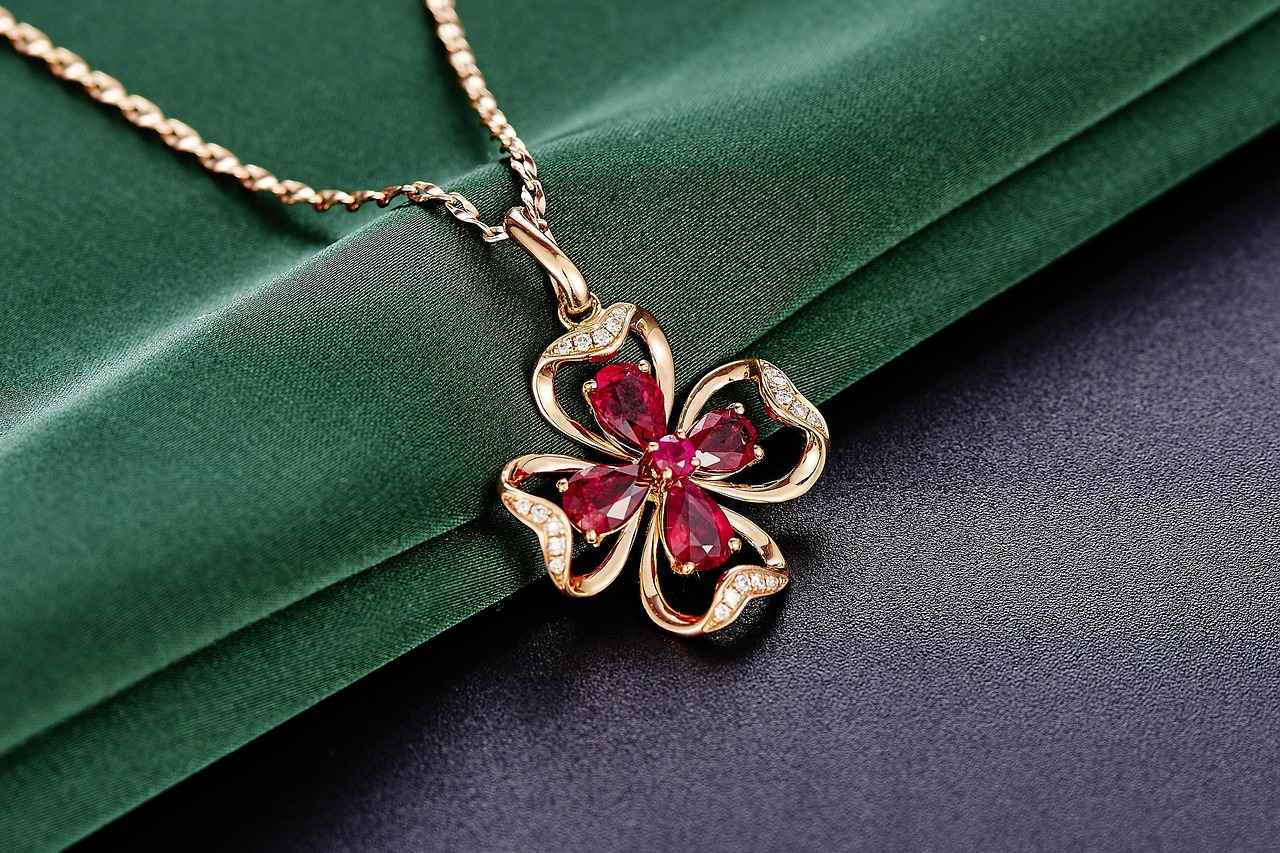
Where to Buy Pre-Owned Designer Jewelry?
When it comes to investing in pre-owned designer jewelry, the platforms you choose to purchase from can make a significant difference in your overall experience and investment potential. Understanding where to shop is crucial for securing authentic pieces at competitive prices. Below, we explore various avenues for purchasing pre-owned designer jewelry, highlighting the benefits and considerations of each.
Online marketplaces have revolutionized the way we shop for jewelry, offering a vast selection of pre-owned pieces from various sellers. However, not all platforms are created equal. Here are some popular options:
- eBay: A well-known online auction site where buyers can bid on or purchase items outright. Look for sellers with high ratings and positive feedback.
- Chrono24: Primarily focused on luxury watches, this platform also features a selection of designer jewelry. Authenticity guarantees are often provided.
- The RealReal: A luxury consignment site specializing in authenticated pre-owned items. Their rigorous authentication process ensures you receive genuine products.
- Vestiaire Collective: This platform offers a curated selection of pre-owned luxury goods, with a strong emphasis on sustainability and authenticity.
Auctions and estate sales can be treasure troves for those seeking unique pre-owned designer jewelry. These venues often feature items that are not available in traditional retail settings. Here are some reasons to consider:
- Competitive Pricing: Auctions can sometimes yield pieces at lower prices than retail, especially if there is less competition for a specific item.
- Unique Finds: Estate sales often include jewelry with history and character, which can add significant value.
- Expert Insights: Many auction houses provide expert appraisals, giving buyers confidence in their purchases.
Regardless of where you choose to shop, identifying reputable sellers is vital. Here are some tips to ensure you’re making a wise investment:
- Check Reviews: Look for customer reviews and ratings on the platform. This can provide insights into the seller’s reliability.
- Ask for Documentation: Reputable sellers should provide certificates of authenticity and any relevant appraisal documentation.
- Return Policies: Ensure that the seller has a clear return policy in case the item does not meet your expectations.
Understanding pricing is crucial when buying pre-owned jewelry. Prices can vary widely based on factors such as brand, condition, and market demand. Here are some considerations:
- Market Research: Familiarize yourself with the market value of the piece you’re interested in. Websites like Jewelry Loupe can help you gauge current prices.
- Condition Matters: The condition of the jewelry can significantly affect its price. Well-maintained pieces typically command higher prices.
- Brand Influence: High-end brands often retain value better than lesser-known names. Knowing the brand can help you make informed decisions.
In conclusion, finding the right platforms to purchase pre-owned designer jewelry is essential for maximizing your investment. By exploring online marketplaces, auctions, and estate sales, and by ensuring you buy from reputable sellers, you can enhance your chances of acquiring authentic and valuable pieces. Always conduct thorough research and stay informed about market trends to make the most of your investment.
What Are the Best Online Marketplaces?
When it comes to purchasing pre-owned designer jewelry, the choice of marketplace can significantly impact your experience and investment. With numerous online platforms available, it is crucial to identify those that offer both quality and reliability. This section will explore the best online marketplaces for buying pre-owned jewelry, emphasizing the importance of reputation, customer reviews, and seller ratings.
Shopping for pre-owned jewelry online can be a rewarding experience, but it comes with its own set of challenges. Choosing reputable online marketplaces is essential for ensuring that you receive authentic products and avoid potential scams. Reputable sites often have established policies for customer protection, which can enhance your overall buying experience.
- Customer Reviews: Look for platforms that allow customers to leave feedback. A site with numerous positive reviews is generally a good sign of reliability.
- Seller Ratings: Many online marketplaces feature seller ratings, which provide insight into the seller’s performance and the quality of their items.
- Return Policies: Trusted marketplaces typically have clear return policies, allowing you to return items if they do not meet your expectations.
- Authentication Services: Some platforms offer authentication services to verify the legitimacy of the jewelry, giving you peace of mind with your purchase.
Here are some of the most reputable online marketplaces where you can find a vast selection of pre-owned designer jewelry:
- eBay: Known for its extensive range of items, eBay features a robust seller rating system and buyer protection policies. Always check the seller’s feedback and return policy before making a purchase.
- Chrono24: Specializing in luxury watches, Chrono24 also offers a selection of high-end jewelry. Their platform includes verification services to ensure authenticity.
- 1stdibs: This site is known for its curated selection of high-quality antiques and vintage items, including designer jewelry. The platform emphasizes seller transparency and quality assurance.
- Vestiaire Collective: Focused on luxury fashion, Vestiaire Collective allows users to buy and sell pre-owned designer items. They have a dedicated team to authenticate items before they are listed.
To enhance your online shopping experience for pre-owned jewelry, consider the following tips:
- Do Your Research: Before making a purchase, research the item and the seller. Look for comparable pieces to understand fair market value.
- Ask Questions: Don’t hesitate to reach out to sellers with any questions about the item’s condition, history, or authenticity.
- Utilize Filters: Most online marketplaces have filtering options to help you narrow down your search based on brand, price range, and item condition.
In conclusion, while online marketplaces provide a vast selection of pre-owned jewelry, it is essential to choose reputable sites. By researching customer reviews and seller ratings, you can enhance your buying experience and make informed decisions that will benefit your investment in the long run.
Should You Consider Auctions or Estate Sales?
When it comes to acquiring pre-owned designer jewelry, auctions and estate sales present unique opportunities that savvy buyers should consider. These venues often feature rare pieces at competitive prices, making them appealing for collectors and everyday shoppers alike. Understanding how these events operate can significantly enhance your purchasing strategy.
Auctions are renowned for their exciting atmosphere and potential for significant savings. Here are some reasons why you should consider participating in jewelry auctions:
- Unique Selections: Auctions often feature one-of-a-kind items that you won’t find in traditional retail settings.
- Competitive Pricing: Bidding can drive prices down, allowing you to acquire luxury items at a fraction of their retail value.
- Expert Appraisal: Many auction houses provide detailed descriptions and appraisals, ensuring transparency in the value of the pieces.
Estate sales, on the other hand, are typically organized to liquidate personal belongings after a significant life event, such as a death or relocation. Here’s why they can be advantageous:
- Direct Pricing: Prices at estate sales are often fixed, which can simplify the purchasing process.
- Emotional Connections: Many pieces carry personal stories, adding sentimental value to your purchase.
- Less Competition: Unlike auctions, where bidding can escalate quickly, estate sales may have less competition, allowing for better deals.
Preparation is key to making the most of auctions and estate sales. Here are some tips:
- Research: Familiarize yourself with the items being sold. Understanding market values will help you set your budget.
- Inspect Items: Always examine pieces closely for authenticity and condition before making a bid or purchase.
- Set a Limit: Determine your maximum bid or spending limit to avoid overspending in the heat of the moment.
To safeguard your investment, verifying the authenticity of jewelry is crucial. Here are some strategies:
- Certificates of Authenticity: Look for documentation that proves the piece’s origin and value.
- Expert Opinions: Consider consulting a jeweler or appraiser who can authenticate the piece.
- Brand Knowledge: Familiarize yourself with the specific characteristics of designer brands to identify genuine items.
While auctions and estate sales offer fantastic opportunities, they also come with risks. Here’s what to be aware of:
- Counterfeits: The risk of purchasing counterfeit items is ever-present, especially in less regulated environments.
- Hidden Damage: Some pieces may have undisclosed damage that affects their value and integrity.
- Market Fluctuations: The value of jewelry can fluctuate based on trends and demand, impacting your investment.
In summary, auctions and estate sales can be treasure troves for those looking to acquire pre-owned designer jewelry. By understanding the dynamics of these venues, conducting thorough research, and being mindful of potential risks, you can make informed decisions that enhance your jewelry collection.
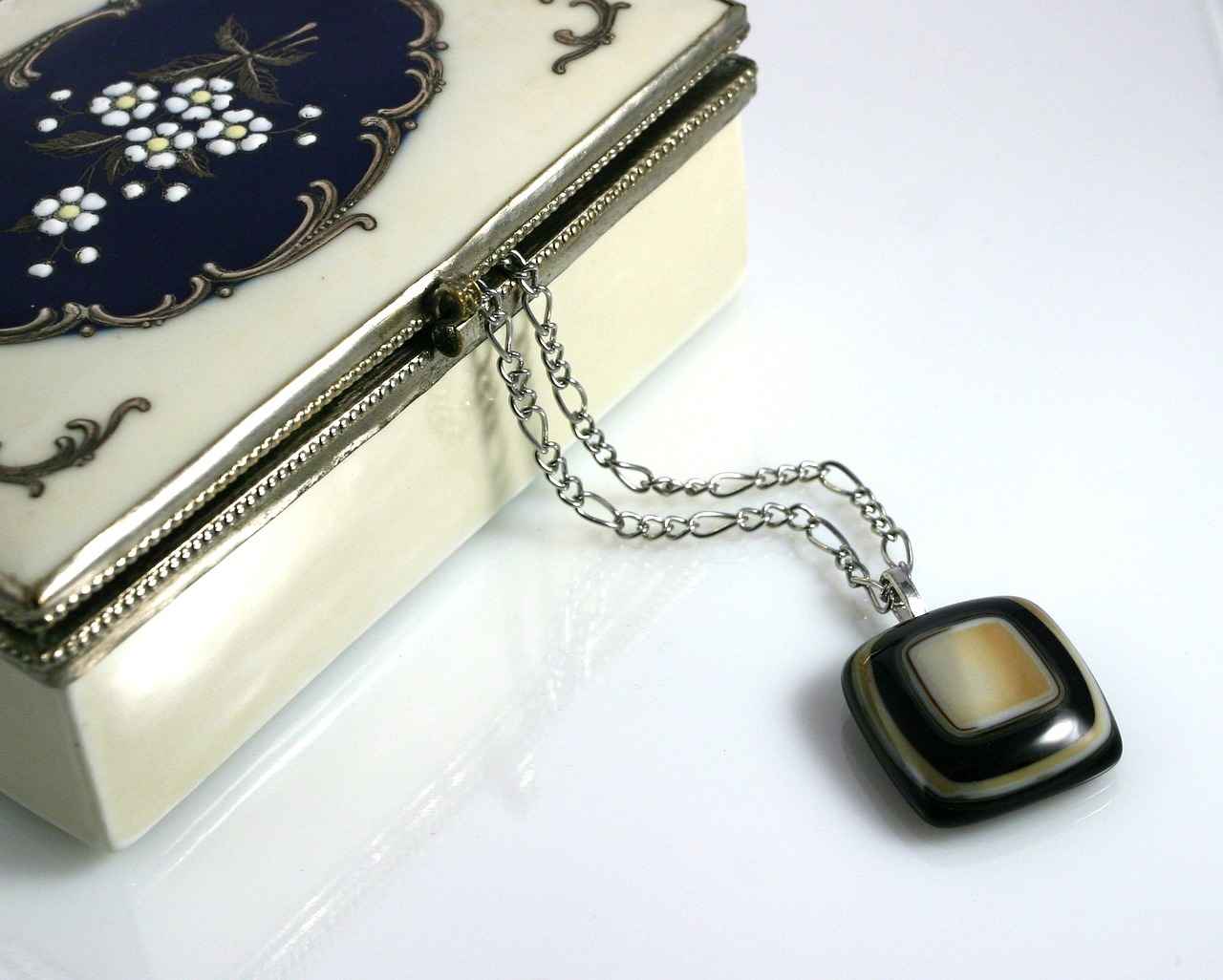
How to Care for Your Pre-Owned Jewelry?
When it comes to owning pre-owned jewelry, proper care and maintenance are paramount for preserving both its value and appearance. These pieces often carry a rich history and can be a significant investment. Therefore, learning effective care techniques is essential for long-term investment success.
Jewelry can be delicate, and pre-owned pieces may have already experienced wear and tear. By implementing a consistent care routine, you can:
- Maintain Appearance: Regular cleaning prevents tarnishing and keeps your jewelry looking its best.
- Preserve Value: Well-maintained pieces tend to command higher resale prices.
- Extend Lifespan: Proper care can significantly increase the lifespan of your jewelry.
Cleaning your jewelry correctly is essential. Here are some safe techniques:
- Gentle Soap and Water: For most pieces, a mixture of mild dish soap and warm water can effectively clean without causing damage. Use a soft cloth or a toothbrush with soft bristles to gently scrub.
- Professional Cleaning: For intricate designs or valuable pieces, consider having them professionally cleaned to ensure they are handled with care.
- Avoid Harsh Chemicals: Steer clear of bleach and other harsh chemicals that can damage metals and stones.
Proper storage is just as important as cleaning. Here are some tips for effective storage:
- Use Soft Pouches: Store each piece in a soft pouch or separate compartments to prevent scratching.
- Avoid Humidity: Keep your jewelry in a dry place, as humidity can lead to tarnishing and damage.
- Regular Checks: Periodically check your jewelry for any signs of wear or damage, addressing issues promptly to prevent further deterioration.
Handling your jewelry with care can contribute to its longevity. Here are some practical tips:
- Remove When Necessary: Take off your jewelry when engaging in activities that may expose it to harsh chemicals or physical strain, such as swimming or exercising.
- Avoid Exposure to Sunlight: Prolonged exposure to sunlight can fade certain gemstones. Store your jewelry in a dark place when not in use.
Regular maintenance not only keeps your jewelry looking beautiful but also:
- Enhances Durability: Consistent care can prevent minor issues from becoming major repairs.
- Increases Resale Value: Well-maintained pre-owned jewelry can fetch a higher price on the resale market.
- Preserves Sentimental Value: Many pieces carry emotional significance, and taking care of them can help retain those memories.
In summary, the care and maintenance of pre-owned jewelry are essential for preserving its beauty and value. By adopting safe cleaning practices, storing your pieces properly, and handling them with care, you can ensure that your investment remains a cherished part of your collection for years to come.
What Cleaning Techniques Are Safe?
When it comes to caring for your pre-owned jewelry, understanding safe cleaning techniques is essential. These methods not only help maintain the jewelry’s appearance but also preserve its integrity, ensuring that your investment remains in excellent condition for years to come.
Using appropriate cleaning techniques is vital to maintaining the integrity of pre-owned jewelry. Familiarity with safe methods can prevent damage and keep pieces looking their best. Here are some effective cleaning techniques that are both safe and easy to implement:
- Warm Soapy Water: For most types of jewelry, a gentle solution of warm water and mild dish soap is an excellent choice. Soak the jewelry for a few minutes, then use a soft brush to gently scrub away any dirt or grime.
- Microfiber Cloth: For quick touch-ups, a microfiber cloth can effectively remove fingerprints and smudges without scratching the surface. This method is ideal for pieces that are frequently worn.
- Jewelry Cleaning Solutions: There are many commercial jewelry cleaners available that are specifically formulated to be safe for various materials. Always read the instructions and ensure the product is suitable for your jewelry type.
- Ultrasonic Cleaners: While these devices can be effective for cleaning, they may not be suitable for all jewelry types. Use caution and check if your piece can withstand ultrasonic cleaning before proceeding.
- Professional Cleaning: For valuable or intricate pieces, consider having them cleaned by a professional jeweler. They have the expertise and tools to clean your jewelry safely and effectively.
In addition to cleaning, it’s important to consider how you store your jewelry. Proper storage can significantly impact the longevity and appearance of your pieces.
Proper storage of pre-owned jewelry is crucial to avoid scratches and tarnishing. Here are some practical tips:
- Individual Pouches or Boxes: Store each piece in a separate pouch or box to prevent scratching. Soft materials like velvet or silk are ideal for this purpose.
- Avoid Humidity: Keep your jewelry in a dry place, as humidity can lead to tarnishing. Consider using silica gel packets in your storage area to absorb excess moisture.
- Keep Away from Sunlight: Prolonged exposure to sunlight can cause fading and discoloration. Store your jewelry in a dark place or a jewelry box with a lid.
- Regular Checks: Periodically check your jewelry for any signs of damage or wear. Early detection can prevent further issues and maintain the value of your pieces.
By implementing these safe cleaning and storage techniques, you can ensure that your pre-owned jewelry remains in pristine condition. Proper care not only enhances the appearance of your jewelry but also protects your investment, allowing you to enjoy your beautiful pieces for many years to come.
How to Store Your Jewelry Properly?
When it comes to preserving the beauty and value of your pre-owned jewelry, proper storage is essential. Many people overlook this crucial aspect, but understanding how to store your jewelry can significantly prolong its lifespan and maintain its quality. Here are some effective practices to ensure your precious pieces remain in pristine condition.
Jewelry can be susceptible to scratches, tarnishing, and other forms of damage if not stored correctly. Factors such as humidity, exposure to light, and physical contact with other items can all contribute to deterioration. By implementing the right storage techniques, you can protect your investment and keep your jewelry looking as stunning as the day you bought it.
- Use Soft Pouches or Cases: Store each piece in a soft pouch or a dedicated jewelry case to minimize contact with other items. This helps prevent scratches and keeps pieces organized.
- Avoid Humidity: Keep your jewelry in a dry environment. Consider using silica gel packets in your storage area to absorb moisture, which can lead to tarnishing.
- Separate Different Materials: Store gold, silver, and gemstones separately to avoid reactions that can cause damage. For example, certain gemstones can scratch softer metals.
- Utilize Anti-Tarnish Products: Invest in anti-tarnish strips or cloths that can help prevent tarnishing, especially for silver jewelry.
Organization plays a vital role in jewelry storage. A well-organized collection not only makes it easier to find what you need but also reduces the risk of damage. Here are some tips:
- Use Dividers: Utilize drawer dividers or trays to separate different types of jewelry. This prevents tangling and minimizes the risk of scratches.
- Label Storage Areas: If you have a large collection, consider labeling sections of your storage space. This can save time and help you locate specific pieces quickly.
- Regularly Review Your Collection: Periodically check your jewelry for any signs of wear or damage. This allows you to address issues before they become more significant problems.
There are several common mistakes to avoid when storing your jewelry:
- Don’t Store in Direct Sunlight: Prolonged exposure to sunlight can cause fading and discoloration. Keep your jewelry in a dark, cool place.
- Avoid Storing in the Bathroom: Bathrooms can be humid environments, which is not ideal for jewelry. Instead, choose a dry area for storage.
- Don’t Overcrowd Storage Space: Avoid cramming too many pieces into one space. This can lead to scratches and tangles.
In summary, proper storage of your pre-owned jewelry is crucial to avoid scratches and tarnishing. By following these guidelines, you can maintain the quality and value of your investment. Remember, a little effort in storage can go a long way in preserving the beauty of your cherished pieces for years to come.
Frequently Asked Questions
- What should I look for when buying pre-owned designer jewelry?
When purchasing pre-owned designer jewelry, focus on the brand reputation, condition of the item, and any certifications of authenticity. These factors can greatly influence the value and your overall satisfaction with the purchase.
- How can I ensure the jewelry I buy is authentic?
To verify authenticity, always buy from reputable sellers, check for certificates of authenticity, and research the specific brand’s hallmarks or markings. This diligence helps protect your investment from counterfeits.
- Are there specific marketplaces recommended for buying pre-owned jewelry?
Yes, some popular online marketplaces include established platforms like eBay, The RealReal, and Poshmark. Make sure to check seller reviews and ratings to ensure a trustworthy transaction.
- What are the risks associated with buying pre-owned jewelry?
Risks include potential counterfeit items, fluctuating market values, and hidden damages. It’s crucial to do your homework and be aware of these risks to make informed buying decisions.
- How can I maintain the value of my pre-owned jewelry?
To maintain value, care for your jewelry properly by using safe cleaning techniques and storing pieces in a way that prevents scratches and tarnishing. Regular maintenance can keep your investment looking its best.
